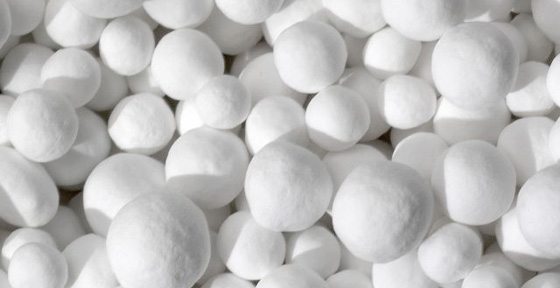Water in compressed air systems is one of the leading causes of failure. Pneumatic systems, regardless of their purpose, are not designed to operate with water present.
How Temperature Affects Water Vapor
Air is comprised primarily of oxygen and nitrogen with trace amounts of other ambient gases. Dalton’s Law of Partial Pressures tells us that water vapor is present in an inverse partial pressure to the amount of oxygen and nitrogen present in any given sample of air. In normal atmospheric conditions, water vapor is always present to some degree and usually dictated by ambient temperature.
In addition, the Ideal Gas Law tells us a constant volume of air has a greater capacity to hold higher volumes of water vapor at higher temperatures. For every 20°F rise in temperature, air’s capacity for holding moisture doubles. Because of the heat generated during the compression process, compressed air has a very high potential capacity for holding moisture. The converse of this is also true; as the air is cooled, its ability to hold moisture decreases, resulting in moisture condensed in liquid form.
Why Air Treatment is So Important
In order for compressed air systems to perform properly the air must be dry. More specifically, the air must not contain liquid moisture and should be at a relative humidity of less than 50 percent to prevent corrosion. Bulk liquid in compressed air systems can block control air lines, damage air tools and cause water hammer events that damage equipment. Processes can also be directly impacted when water enters from the air stream.
For example, in a rail environment, water can be pushed into reservoir tanks where a “spitter” valve will eject it from the system. However, if the air cools downstream of the reservoir, water will remain in vapor form and travel beyond the spitter valve and into the brake system, which could cause costly damage.
Removing moisture for corrosion protection is also important for the equipment using the air and the air system itself. Particulate created from rust and scale can foul lines and damage components of the air system. In the worst case, corrosion could lead to failure in the pipe work, creating leaks and preventing air from reaching the process where it is needed.
While filters and separators are able to remove liquid moisture droplets from a system, they are unable to remove water vapor. Therefore, the best strategy for eliminating the presence of water in a compressed air system is to remove the water while it is in vapor form with the use of an air dryer.
To learn more about Atlas Copco’s compressed air dryers, simply contact us by filling out our Request a Quote form and a representative will be in touch with you shortly. You may also enjoy the following articles:
- Innovative Energy Recovery Project Cuts Local College’s Heating Bill
- Rick Dore to Sign Autographs at Atlas Copco SEMA 2015 Booth #10209
- Bigger Doesn’t Always Mean More Powerful
Source: Compressed Air Blog


